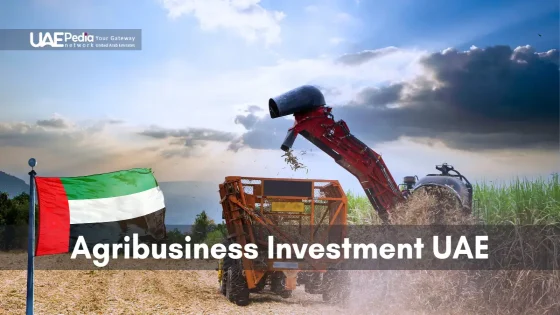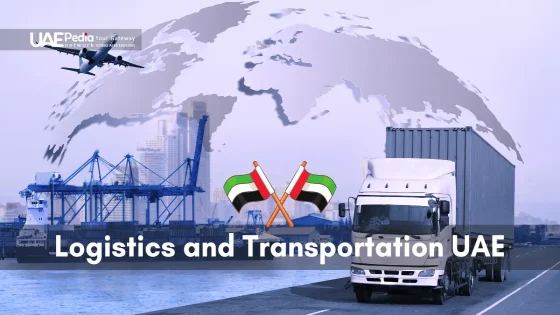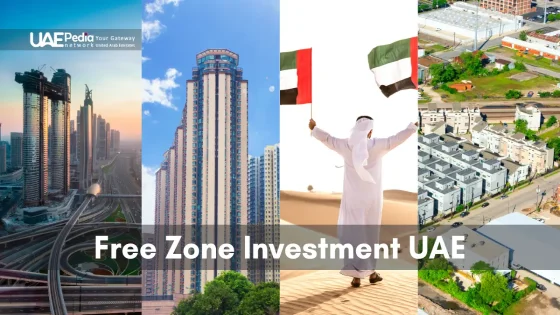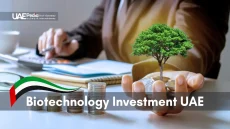Despite its desert environment, the UAE is transforming its food security landscape—Under the National Food Security Strategy 2051, the UAE aims to boost domestic food production to cover 50% of local consumption by 2051 through high-tech farming and global investments.
Since the 2007–2008 food price crisis, the UAE has amassed approximately 960,000 ha of farmland overseas to diversify its food supply—primarily in Africa—to bolster global food supplies.
UAE’s agribusiness sector blossoms, offering ripe opportunities for savvy investors and entrepreneurs.
Dubai’s strategic location and world-class infrastructure are turning it into a hub for agribusiness investment. In 2022, non-oil food product trade reached AED 130 billion—up 24% year-on-year and representing 5.7% of non-oil trade This growth spurt signals lucrative opportunities in UAE food production investment and agribusiness.
From vertical farms to organic dairy production, the Emirates are building a diversified agribusiness portfolio primed for strategic investment.
UAE’s Strategic Vision for Food Security 2051
The UAE is making big plans for food by 2051. They want to cut down on food imports from 90% to 50%. This is a huge change for a country that imports a lot of food.
In 2022, the UAE brought in 16.9 million tons of food. They’re aiming to make more food at home. This marks a significant advance in national food sovereignty.
Reducing import dependency from 90% to 50% by 2051 will place significant demand on water resources and require rapid rollout of water-efficient farming technologies and infrastructure upgrades Ref.: “National Food Security Strategy 2051. (2024). The Official Portal of the UAE Government.” [!]
Reducing Import Dependency
The UAE’s 10 million people mostly eat food brought in from other countries. In 2022, they got 1.9 million tons of wheat and 1.2 million tons of rice. But they’re changing this.
They want to grow more food at home. They aim to increase domestic food production by 30% to 40%.
Read More:
Government Investment Initiatives
The UAE government is serious about food security. They’re spending billions to help the agribusiness grow. These government investments are fueling rapid agribusiness expansion across the Emirates.
| Initiative | Goal | Impact |
|---|---|---|
| Vertical Farming | Increase local production | Uses 95% less water than traditional farming |
| Food Security Alliance | Regional cooperation | Investments in 19 countries |
| AgTech Investments | Boost innovation | 1.1% of global agritech investment capital in 2021 |
Sovereign Wealth Funds Accelerating Agribusiness Growth
The UAE’s wealth funds are key to their food security plan. They’re investing a lot in agriculture. It’s not just about money anymore. They’re turning desert into productive land for food.
Read More:
Agribusiness Investment UAE: Key Market Opportunities
Strong policy support and high growth rates are drawing investors into the UAE’s agribusiness sector.
The UAE’s farms are full of chances, and we’re here to help you find them.
First, let’s look at organic farming in the UAE. People want healthier food, and organic farming is growing. It’s a big market waiting to be tapped.
Livestock farming is also hot in the UAE. From dairy to poultry, there’s a big demand for local animal products.
Now, let’s talk about fish farming. With the UAE’s long coast, fish farming is booming. It’s not just fishing anymore; it’s high-tech aquaponics.
For the future, investing in UAE agricultural startups is key. These startups are working on cool AgTech solutions. From vertical farming to AI for crops, they’re making waves.
| Investment Area | Growth Potential | Key Facts |
|---|---|---|
| Organic Farming | High | UAE aims to increase local production by 30-40% in next decade |
| Livestock Farming | Medium | Growing demand for locally sourced animal products |
| Aquaculture | High | Innovative aquaponics systems gaining traction |
| AgTech Startups | Very High | The UAE’s agritech sector is projected to grow from USD 3.17 billion in 2023 to USD 4.09 billion by 2029 |
The UAE Business scene is all about new ideas, especially in agriculture. With government help, now is a great time to invest. Whether you like old-school farming or new tech, there’s something for you.
Technology-Driven Agricultural Innovation in the Emirates
The UAE is leading in agri-tech innovation. It’s turning its desert into a high-tech farming area. Big investments in greenhouses and smart farming are changing food production in dry places.
The UAE’s heavy reliance on desalination for agricultural water supplies consumes vast amounts of energy and contributes to CO₂ emissions and marine ecological risks Ref.: “TIME. (2023). Water Is the New Oil in the Gulf. Time Magazine.” [!]
“read more: Working Hours Regulations UAE Labor Law Guide“
Hydroponics & Vertical Farming for Water-Smart Production
The UAE is growing hydroponic and vertical farming fast. These methods save space and water, great for cities and deserts. Imagine tall buildings full of fresh greens and tomatoes – that’s farming in the UAE’s future!
Smart Agriculture and IoT Implementation
Smart farming is growing in the UAE, with IoT and AI. These tools help farms use less water and grow more food. The UAE wants to make farms 20% more productive in five years.
AgTech Parks and Innovation Centers
AgTech parks are popping up in the UAE. They’re places for new farming tech. The goal is to cut food waste by 50% and grow organic farming by 25%.
| Technology | Impact Score (1-10) | Key Benefit |
|---|---|---|
| AI-powered decision-support platforms | 9 | Personalized farming advice |
| Precision Farming Tools | 8 | Optimized resource use |
| Carbon Market Solutions | 7 | Reduced carbon footprint |
| Sustainable Energy Systems | 8 | Lower emissions and costs |
International Agricultural Investment Portfolio
The UAE wants to make sure everyone has food. They’re investing in farms all over the world. This is a big plan to grow food for everyone.
Strategic Farmland Acquisitions in Africa
UAE companies are buying land in Africa. They have 960,000 hectares of farmland there. Sudan is a big part of their plan, with over 50,000 hectares.
They also want to farm in Egypt, Uganda, Kenya, and Zambia. They’re really serious about growing food in Africa.
International Partnerships Enhancing Food Security
The UAE is making friends with farmers. They’re working with 52 big companies in 12 countries. This is a big deal, with $666.3 million invested.
They’re helping farmers grow more food. This is a great way to help everyone.
“read also: Annual Leave Entitlement UAE Calculation Methods“
Integrating Global Agri-Food Supply Chains
The UAE is building a big food network. They’re making ports and logistics better. This will help them be the center of food trade.
Investors are very interested in this. The Middle East and Africa are key players in this big change.
| Country | Percentage of AAAID Investments |
|---|---|
| Sudan | 63.80% |
| Egypt | 7.11% |
| Oman | 5.88% |
| UAE | 5.23% |
| Other Arab States | 17.98% |
The UAE is growing its food empire. They’re making a big impact in the global food chain. It’s a great time for investors to join in.
UAE’s Agricultural Free Zones and Infrastructure
The UAE is leading in agribusiness with its new agricultural free zones. These areas are attracting big companies and boosting investment in farming. They offer tax breaks and easy rules, making them popular worldwide.
Abu Dhabi is building top-notch logistics and transport systems for these zones. The emirate’s ports are growing, making the UAE a big player in food trade. This is key for linking African farms with Middle Eastern markets.
The UAE is also forming strong partnerships in Africa. They’ve made 56 land deals in Uganda and more are coming. This is setting up a strong farm supply chain. Africa’s economy is expected to hit over $2.5 trillion by 2030.
Jebel Ali Free Zone (JAFZA) is a great example of the UAE’s farm support. It has over 8,700 companies from more than 100 countries. JAFZA helps trade worth over $104 billion each year. It shows how free zones can drive growth and global work in farming.


















